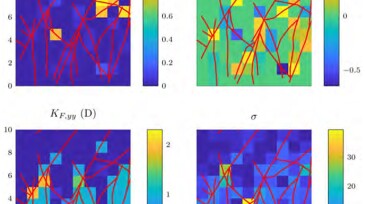machine learning
-
During transfer learning, the knowledge gained and rapid progress made from a source task is used to improve the learning and development to a new target task.
-
This paper describes the current challenges faced by energy companies, the implications of observable industry trends, the characteristics that potential cybersecurity solutions must meet, and how artificial intelligence (AI) and machine learning (ML) can meet these requirements.
-
This paper analyzes several configurations of convolutional neural networks suited for predicting upscaled fracture permeabilities and shape factors required to close a dual porosity/dual permeability model.
-
In the authors’ study, a machine-learning predictive model—boosted decision tree regression—is trained, tested, and evaluated in predicting liquid holdup in multiphase flows in oil and gas wells.
-
The utility of mud gas data so far has been limited to fluid typing, formation evaluation, and interwell geological and petrophysical correlation. The ongoing digital transformation has presented the opportunity to increase the utility of, and get more value from, the abundant and rich mud gas data. This article raises the question of whether getting more from mud gas…
-
The ethics of artificial intelligence (AI) has become an important topic in the application of AI and machine learning in the past several years. This second part of a two-part series presents the relevance and use of the ethics of AI in engineering applications. Part 1 explains the evolution and importance of AI ethics.
-
The ethics of artificial intelligence (AI) has become an important topic in the application of AI and machine learning in the past several years. This first part of a two-part series explains the evolution and importance of the ethics of AI. The second part will present its relevance and use in engineering applications.
-
The downtime of manufacturing machinery, engines, or industrial equipment can cause an immediate loss of revenue. Reliable prediction of such failures using multivariate sensor data can prevent or minimize the downtime. With the availability of real-time sensor data, machine-learning and deep-learning algorithms can learn the normal behavior of the sensor systems, dis…
-
Privacy concerns about AI systems are growing. So researchers are testing whether they can remove sensitive data without retraining the system from scratch.
-
One of the major characteristics of petroleum data analytics is its incorporation of explainable artificial intelligence (XAI). Predictive models of petroleum data analytics are not represented through unexplainable black-box behavior. Predictive models of petroleum data analytics are reasonably explainable. This second part of a two-part series presents the use of XA…










